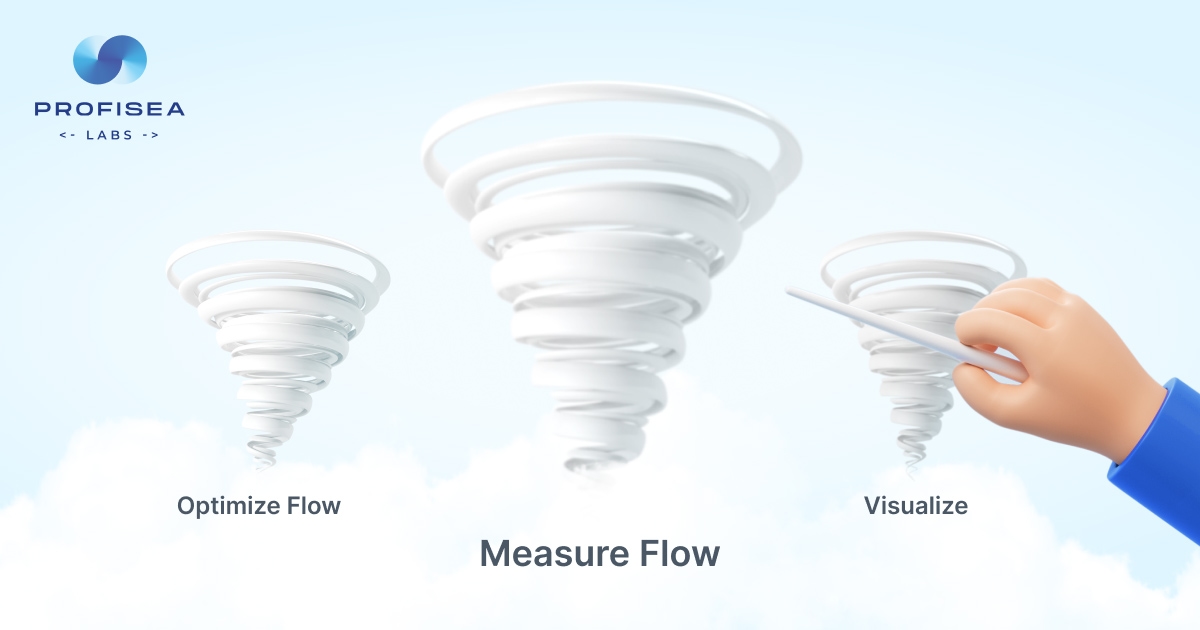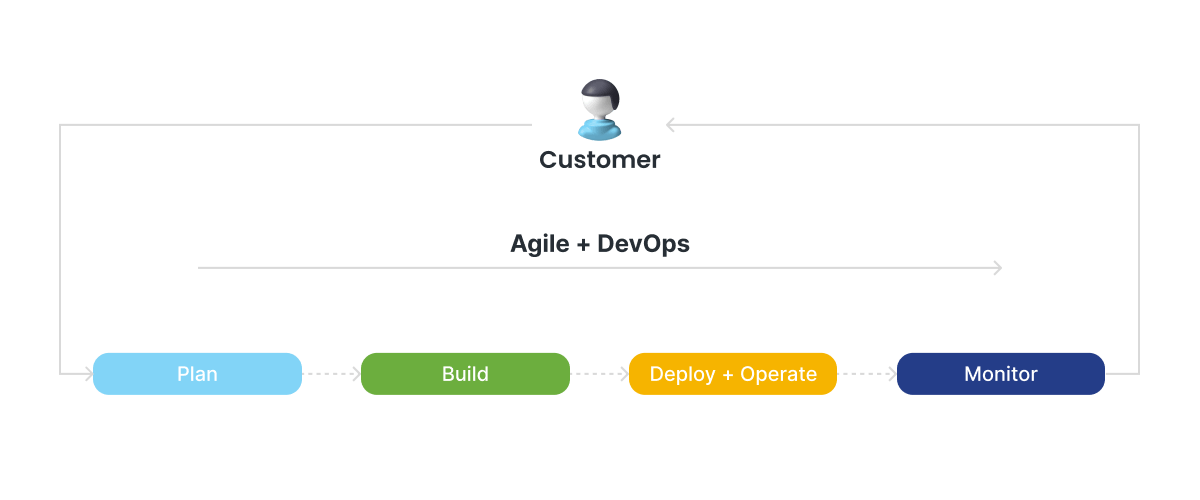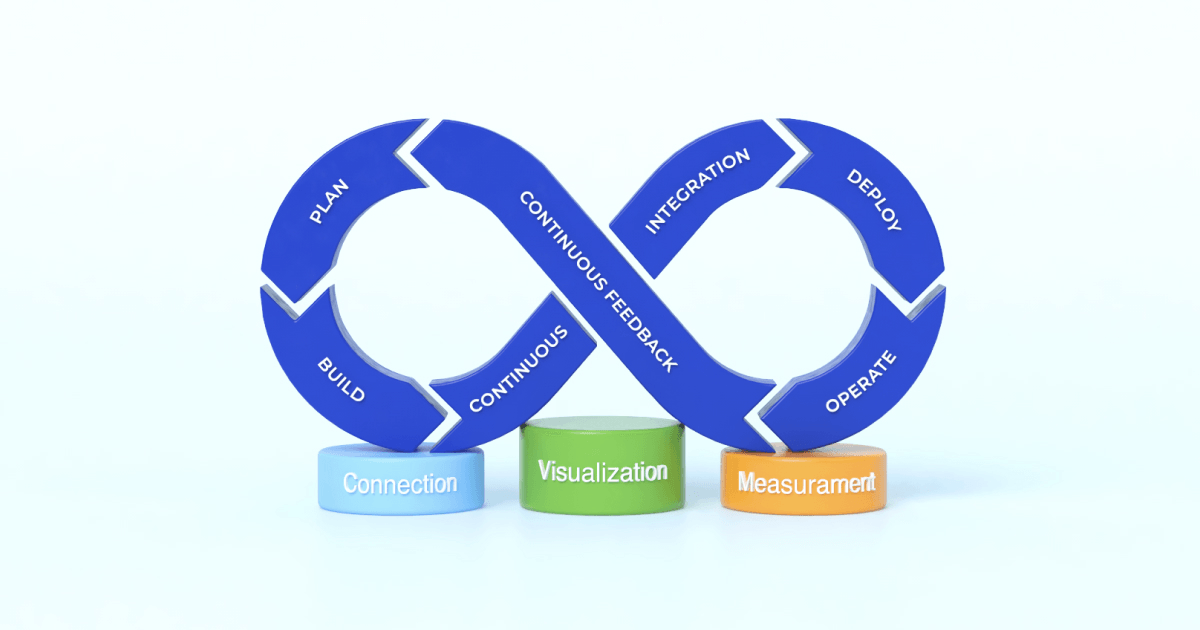Link DevOps to Value Stream Management

In the rapidly bolstering digital landscape, IT business experts agree speed and quality are keys to success. According to Harvard Business Review, 86% of the 654 respondents said quickly developing and releasing new software into production is crucial. That’s why 77% of IT organizations currently rely on DevOps to deploy software or plan to use it in the near future. While stating a CI/CD pipeline is essential, this approach only creates the potential for a strong software delivery process. It means that IT leaders begin to see that business value is a more prized goal and more insightful metric than speed alone. 53% of DevOps professionals said they embodied metrics for sales and revenue boosts, client retention, and customer satisfaction when measuring the success of DevOps projects, according to Forrester.
Gartner’s survey devoted to The Future of DevOps Toolchains states that "infrastructure and operations leaders responsible for selecting and deploying DevOps toolchains should: drive business ability by using DevOps value stream delivery platforms that reduce the overhead of managing complex toolchains." Value stream management (VSM) unlocks business value in the product delivery lifecycle, provides project visibility, and improves collaboration of cross-functional teams ensuring an enterprise agility foundation that accompanies digital transformation.
What is VSM and what does it have to do with DevOps?

For more than 10 years the DevOps community has been arguing about bringing business leadership and business logic on board with digital metamorphosis for business leaders to better understand how DevOps processes help achieve their main goals. Digital shift and evolution is all about business leadership matching with DevOps teams and merging DevOps processes data with business tactics. This is where value stream management (VSM) saves the day marrying DevOps with business needs. VSM allows organizations to understand the overall business impact of software development and delivery by gaining transparency among teams, tools, and processes to measure value in meaningful terms such as product quality, customer satisfaction, application security — all the business valuable results achieved through software development. DevOps data and value stream management together can help your organization add value to your customers and deliver amazing business results. Enterprises are implementing digital transformation initiatives, including better DevOps practices, to meet specific business goals, such as improving the user experience or accelerating the release of features to customers. Emerging application architectures and technologies, including microservices, containers, and Kubernetes, use flexible environments to accelerate software development and delivery without compromising quality.
While the transition to these technologies helps improve the customer experience and ultimately increases business value, it often requires significant effort and investment. However, both business leaders and DevOps teams rarely have a consistent view of how software releases and new technologies benefit the business. This mismatch results in extra effort, expense, and disruption with little or no business benefit. Organizations are turning to value stream management as a way to manage software delivery processes, measure business impact, and provide consistent visibility across the organization. This visibility across teams, tools, and processes enables organizations to measure business results gained with DevOps and, according to Gartner, “By 2023, 70% of organizations will use value stream management to improve flow in the DevOps pipeline, leading to faster delivery of customer value.”
So, what’s Value stream management? VSM is a technique that optimizes the steps required to present, implement, and deliver software to the user. The ultimate goals are to improve quality, speed up delivery, and increase revenue. VSM basically:
- allows you to align digital initiatives with the business results you want to achieve
- increases the speed of software delivery
- provides full visibility to your SDLC
- collects data and tracks it against KPIs that determine speed and quality
- helps identify waste in tools, processes, and even people
- uses Agile and DevOps methodologies to build an effective software delivery ecosystem
- provides monitoring and forecasting.
How to connect VSM and DevOps

Perfectly improved software delivery value stream flows are resting on three main pillars Correlation, Visualization, and Measuring.
Correlation. VSM seeks to get rid of waste from value streams by detecting and separating worthy, meaningful work from worthless toil. Simple logic: If the work does not include any value, clearly it shouldn’t be done. If it includes value but is quite resource-consuming, it should be automated at most. Correlating your meaningful endeavors in one seamless flow and automating it as much as possible is the golden rule of waste elimination. Obviously, the value stream chain solicits foundation, a so-called spine solution to connect and operate all the processes and tools, able to define the routes that business value runs through the system, optimize and automate these flows. If your production environment is cloud-based, well let’s face it 92% of enterprises have a multi-cloud strategy, you can use a cloud management platform to govern, analyze, visualize, and optimize your virtual infrastructure. DevOps value stream delivery platforms are used to find the most cost-effective way to drive business ability and reduce cloud costs and overheads.
Visualization. “Given the maturity of the discipline of information visualization, we should be able to visualize every aspect of each activity that happens within a software value stream.” Mik Kersten, CEO of Tasktop Technologies, creator of the Eclipse Mylyn. Visualization is the most optimal and only method to implement VSM methodology correctly as via visualizing value streams in real-time, teams can rally around dashboards and solve problems in no time. Software data is at the heart of software delivery as each infrastructure component reports its location and status in problem-solving time. Similar to actual-time apps you can visualize and analyze a value stream as it flows through a system of value stream instances, tools, and teams. Visualization platform can collect any data, map how value flows through your teams, and single out where work is piling up so you can get rid of bottlenecks and find more optimal paths to customers’ satisfaction. A good value stream visualization tool grasps a big picture of how the value runs from start to a landing place, helping organizations make adjustments removing obstacles, bypassing bottlenecks, and road re-making if needed.
Measuring. With lots of IT metrics on hand, choosing the ones that truly measure the business impact of software delivery is not a piece of cake. Organizations typically associate their performance with metrics that measure, velocity, deployment frequency, and operational efficiency, mostly indicating some local upgrades. The truth is these metrics can be quite ambiguous because they are not directly connected to business goals and cannot be trusted to provide a precise picture. The updates and new features can be deployed many times a day but if their quality is not aligned with the business needs, the outcomes will also not be satisfactory. Measure the flow, considering flow metrics as vital metrics for software delivery is the best option. Take these top indexes: Flow Efficiency, Delivered Story Points, Lead Time, Cycle Time, Team Capacity, Fled Defects that give a clear indication of whether your flow is healthy, well-performing, and whether it can align with the coveted business payoff.
Final thoughts: Will you use the VSM technique to improve your SDLC?
Aligning business goals with IT operations, speeding up software delivery, and improving software quality is not an easy task to implement. In a way, this is still an unexplored area where DevOps improvements measuring can be a big challenge. Without a clear roadmap for these successes, many organizations' software delivery processes become chaotic and overcrowded. This is where value stream management steps on the scene streamlining everything in the software delivery lifecycle (SDLC) from idea to production focusing on customer value as a key element of software product development. Customer-oriented software products are what drive the growth of IT organizations today after all. But to implement and manage value stream methodology, organizations need to connect the VSM approach to the software delivery cycle, gain end-to-end visibility, and measure software delivery vital metrics. If you have questions about the VSM technique or have any other DevOps-related points just contact us for a free consultation.